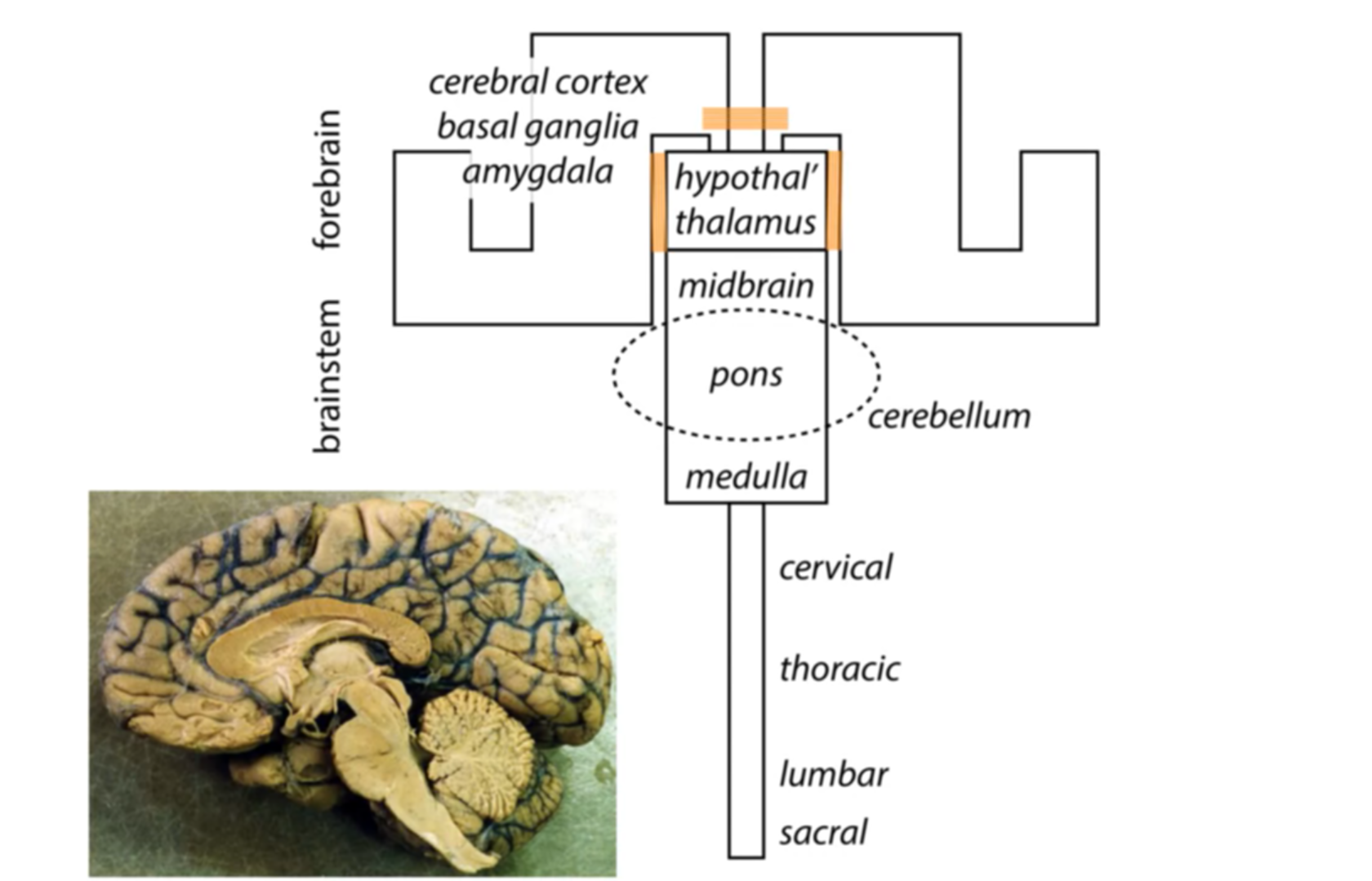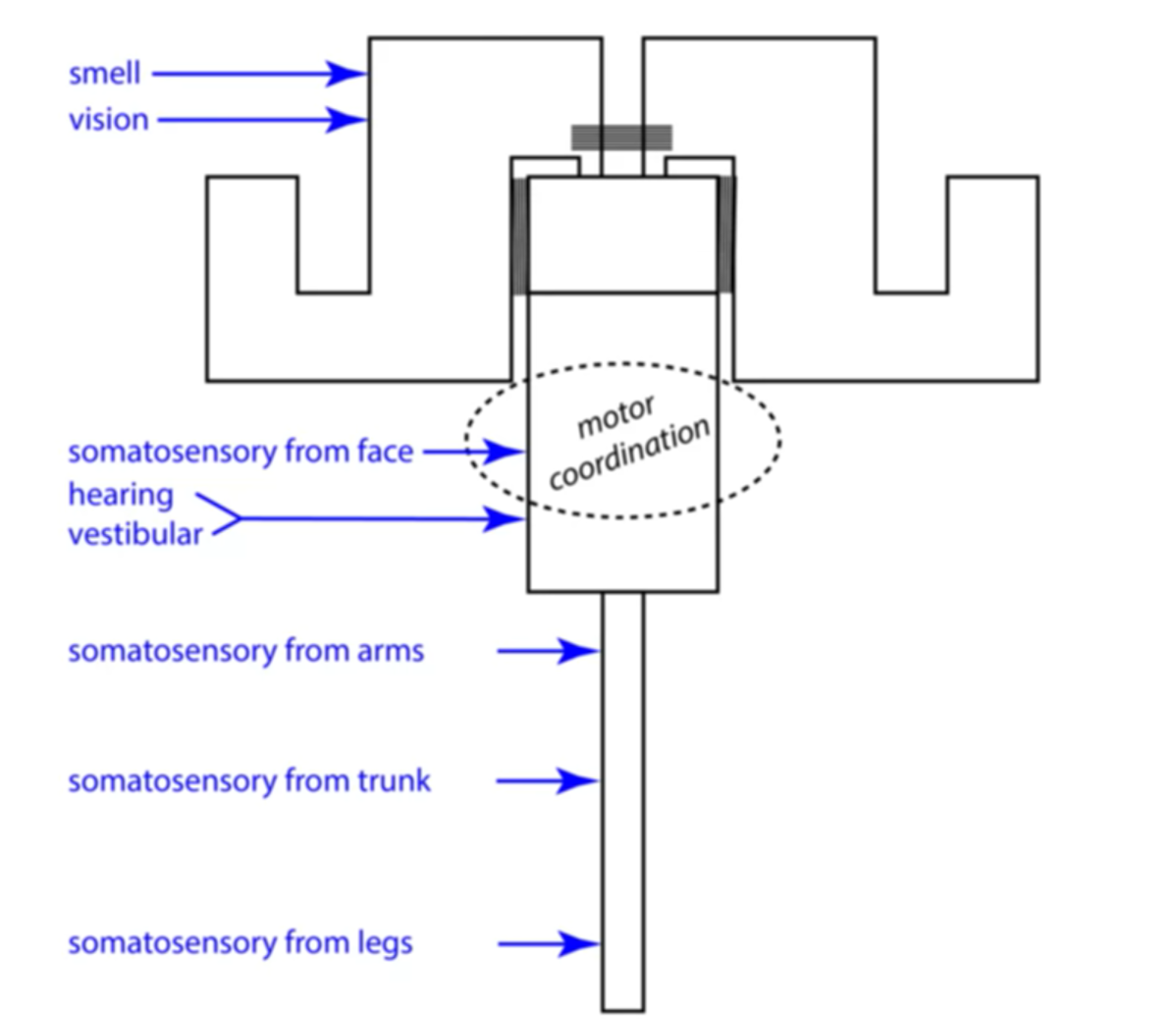


 This lecture focuses on the functional organization of the central nervous system (CNS), highlighting how different parts process sensory information and generate motor output.
This lecture focuses on the functional organization of the central nervous system (CNS), highlighting how different parts process sensory information and generate motor output.
Sensory Information Processing
- Enters the CNS through various regions:
- Spinal cord: Somatosensory information (touch, pain, temperature, pressure, etc.)
- Brainstem:
- Pons: Somatosensory information from the face
- Hindbrain:
- Hearing
- Vestibular (balance and spatial orientation)
- Forebrain:
- Telencephalon (cerebral cortex): Smell (directly enters)
- Diencephalon: Vision (optic nerve originates here)
Important Note: The spinal cord doesn’t enable sensory perception. Information must reach the cerebral cortex for conscious perception.
Motor Output Processing
- Spinal cord: Controls voluntary movements of limbs (arms, legs, hands, feet).
- Brainstem:
- Hindbrain: Houses neurons for involuntary actions like swallowing, talking, coughing (essential for survival).
- Pons: Controls facial expressions and horizontal eye movements (looking sideways).
- Midbrain: Controls vertical eye movements (looking up/down) and near vision (focusing on close objects).
Key Point: The forebrain has no direct motor output. It relies on the brainstem or spinal cord to activate muscles.
Autonomic Nervous System (ANS) Output
- Regulates involuntary functions like heart rate, digestion, and pupil constriction.
- Divided into two branches:
- Sympathetic: Fight-or-flight response (increased heart rate, blood pressure, sweating). Originates entirely from the thoracic spinal cord.
- Parasympathetic: Rest-and-digest response (promotes relaxation, sleep, digestion). Originates from:
- Brainstem: Controls most of the body above the colon (including the eye).
- Sacral spinal cord: Controls the colon, bladder, and sex organs.
Additional Notes
- Spinal cord injury can cause:
- Loss of sensation in the legs and trunk (depending on injury level).
- Inability to move legs.
- Constricted pupils (miosis) due to lack of sympathetic input to the eye.
- Pituitary gland, controlled by the diencephalon, releases hormones throughout the body.
Conclusion
This lecture provided a foundational understanding of how the CNS is organized to process sensory information and generate motor output. The division of labor between different regions ensures efficient control of the body’s internal and external functions.